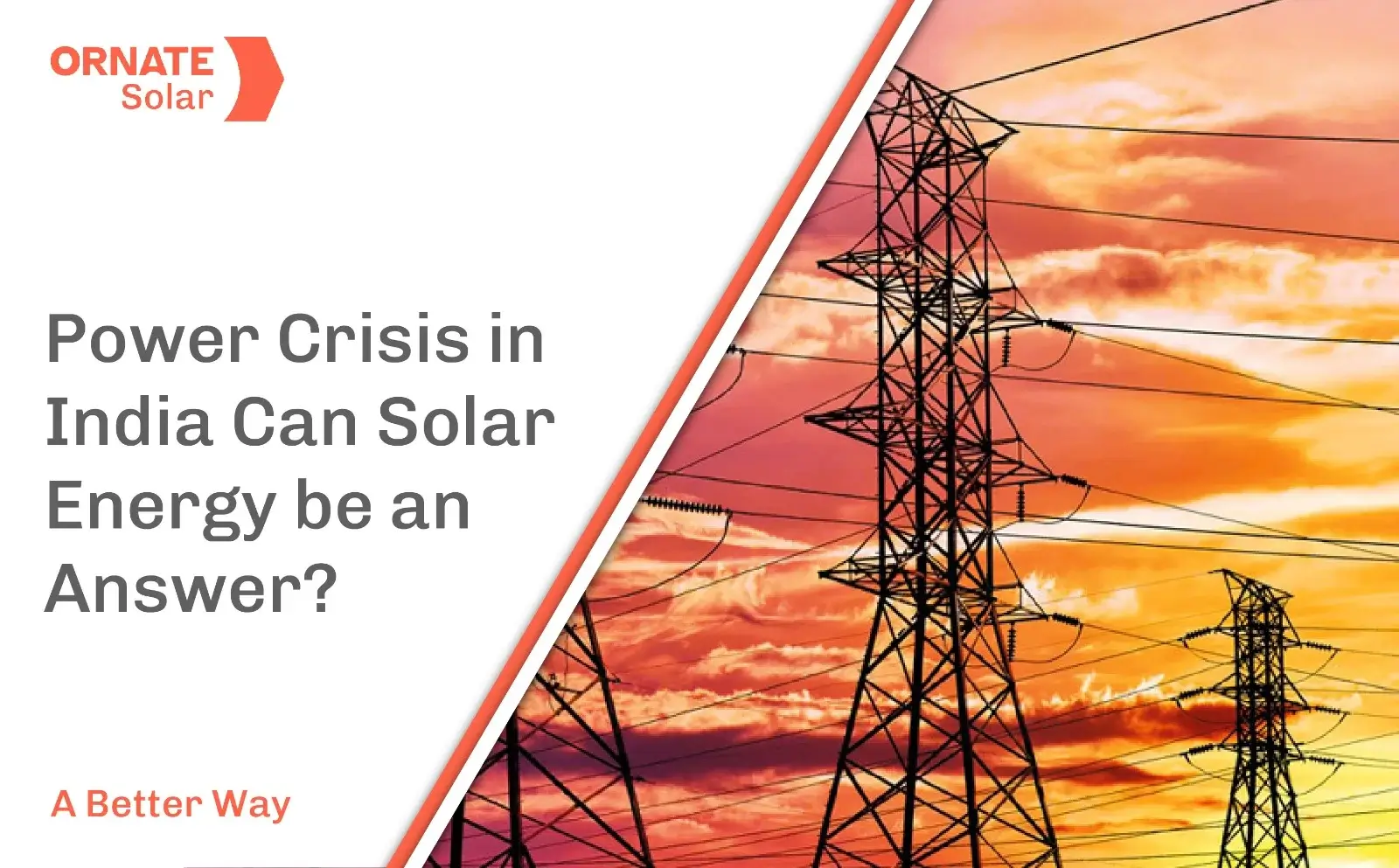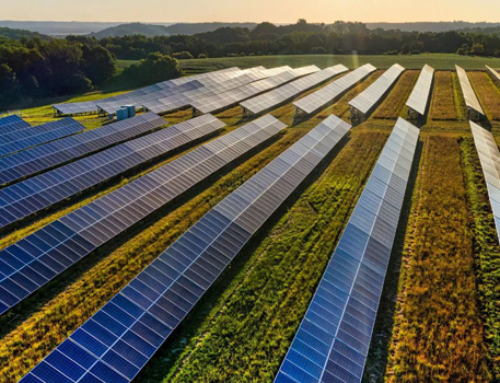

In April 2022, India witnessed a power crisis-the worst in six years. A coal shortage of 100 million units, plunged the states into a series of blackouts and power cuts. DISCOMs tried to conserve power, but with rising temperatures, the demand was at an all-time high.
Multiple states were affected. Delhi was left with a coal inventory of 1-2 days, which severely impacted essential services such as the metro and healthcare. In other states such as Andhra Pradesh, the power supply to the industrial sector was cut short by 50%.
And, the problem doesn’t end there. Annual power demand is growing at an incredible rate, and the price of imported coal continues to shoot up. According to experts, we can expect another set of blackouts in September.
An Unpredictable Resource

Despite being the second largest coal producer in the world, the country experienced a deficit in coal supply. But, this time the lack of availability was not the cause of concern.
Instead, problems with evacuation and stockpiling of coal at thermal power plants created a supply crunch. That, along with the rise in the price of imported coal due to the unsettled political climate of the world- led to a severe shortage.
There is an urgent need to diversify electricity generation in the country. Why? Because even if India manages to evade the coming crisis this year, it might not be able to do so in the future.
The power demand continues to rise. After the Covid-19 pandemic, Indian industries are striving to restart their operations and make up for the lost time. In an economy that is rapidly growing, along with its population- a steady supply of electricity is vital.
This crisis has presented the country with an opportunity- to reduce its dependence on finite fossil fuels. The nation needs a shift. From conventional and limited sources of energy to renewable energy, which is locally available and sustainable.
The Renewable Solution
A study conducted by Climate Risk Horizons-a policy research organization- shows that had India been on track to achieve its renewable energy target of 175 GW, there would have been no crisis.
Renewable energy sources would have supplemented the generation from thermal power plants. This, in turn, would have conserved the dwindling reserves.
“..without the massive renewable growth since 2016, the power crisis in April would have been much, much worse. At the same time, if we had been on track for 175 GW by the end of the year, there would have been no power crisis at all.,” remarks Abhishek Raj, an analyst with Climate Risk Horizons.
Currently, India has a renewable energy capacity of 160.92 GW and the nation has set a target to create 175 GW by the end of 2022. This figure includes wind power, solar energy, bio-power, and small and large hydro electrical power.
Out of these, solar energy is the most accessible power source for homes, businesses, and industries.
The Bright Potential of Solar

As a tropical nation, many states across India receive excellent sunlight. With a well-established solar infrastructure, the country can convert this locally available resource into a power source.
The National Institute of Solar Energy has stated that the country has a vast solar potential of about 748 GW, assuming that 3% of the waste land area is covered by solar modules.
To harness this resource, India has a target of creating 280 GW of solar power capacity by 2030. Moreover, to meet this goal, the Indian government is setting up large-scale solar power plants. They are also encouraging rooftop solar installations through policy changes and subsidy schemes.
And there are many takers.
Businesses and industries from many sectors are switching to solar to cut down their electricity costs and gain a level of independence in energy production. Moreover, as policies on residential solar installations evolve, homeowners are investing in their rooftop solar systems.
Many state-owned buildings are choosing this renewable resource to meet their energy needs. Kerala’s Cochin International Airport Ltd (CIAL) was the first airport in the world to completely operate on solar energy. Similarly, other state airports such as Kolkata, Hyderabad, Delhi, etc choose to take the green energy route.
The reason why solar energy is in the lead when it comes to renewable energy in India is that it offers multiple benefits:
Benefits of Solar Energy
Solar energy production peaks during the daytime. This is also the time when power demand is the highest. If we supplement the coal-based power with this renewable resource, the pressure on coal systems can be reduced. This way, coal reserves can be conserved for the night.
With small and large-scale solar power plants being set up around states, energy generation centres are increasing. Due to this, utility grids are being infused with solar power, thereby improving grid security. A strong grid also limits the possibility of frequent blackouts.
With the growing uncertainty around power sources, the price of electricity is rising. In this scenario, solar can cut down on energy costs significantly. In the short period of 2-3 years, one can recover the initial investment in solar systems.
Many remote regions of India do not have access to electricity but receive abundant sunlight. Solar energy systems with battery backup are a viable solution in such areas.
With the influx of newer technology in the market, solar systems have become more efficient, reliable, and cost-effective. Hence, getting solar installed has become more feasible for consumers from all sectors.
Government Policies & Challenges
Recently, many new policies to promote solar energy development have emerged in India.
Policies such as Approved List of Models and Manufacturers (ALMM)and Basic Custom Duty aim to develop domestic manufacturing capacity for solar modules, by restricting the import of solar modules and solar cells.
Others such as Green Energy Open Access Policy make it easy for Commercial and Industrial consumers to purchase renewable energy from suppliers other than their local power distribution company.
To simplify the process of submission of applications and tracking the transfer of subsidy-a national portal was also created.
However, there are still some major hurdles in reaching the solar target-
- Despite the encouragement, domestic manufacturing capacity for solar components remains low, and import of the same has now become expensive. This affects the cost of solar energy systems.
- There is a need to develop the transmission and distribution infrastructure for the evacuation of power from solar power projects.
- The availability of clear land for ground-mounted solar systems remains a cause of concern. The high cost of land stands as a major obstacle to establishing power plants
- Covid-19 created financial constraints for businesses in the commercial and industrial sectors, hampering their ability to invest in new solar projects.
- Resistance from distribution companies has also been a major hurdle. Many states force restrict net metering and force their consumers to choose gross metering, limiting electricity savings.
To boost solar development in India, a ‘favourable policy environment’ is necessary. Moreover, the Indian government needs to take measures to introduce dedicated financing options for solar projects to make it easier for businesses to shift their focus to solar energy.
Apart from this, better implementation of existing renewable policies and solar infrastructure development is essential for boosting India’s solar capacity.
About Ornate Solar
By partnering with the best-in-class solar panel and inverter brands from around the globe, Ornate Solar has made the shift to solar, cost-effective, reliable, and easy. We also provide a one-stop shop for top-quality solar accessories that can be customized as per your requirements.
If you are exploring solar energy systems for your business, reach out to us at 011 4353 6666 to discuss your options.














Leave A Comment